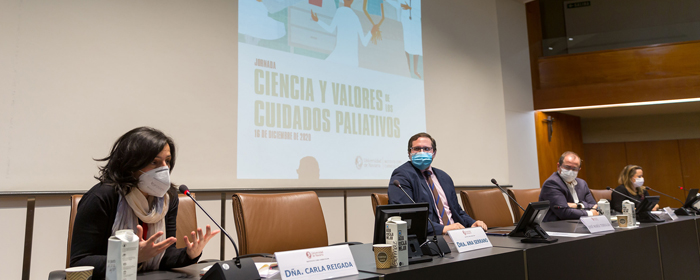Ethnic and linguistic interaction in a country enhances public goods such as health, education and infrastructure
So concluded a study carried out by experts from the University of Navarra, Southern Methodist University (USA) and Charles III University of Madrid

FOTO: Manuel Castells y cedidas
The interaction between people of different ethnicities and languages in a country improves the provision of public goods such as health, education and infrastructure. So concluded a study conducted by Joseph F. Gomes, a researcher at the Navarra Center for International Development (NCID) of the Institute for Culture and Society (University of Navarra), as well as Klaus Desmet, a researcher at Southern Methodist University (USA), and Ignacio Ortuño-Ortin, from the Charles III University of Madrid.
The experts aimed to discover if a nation’s diversity has positive effects on public policy. They started from the hypothesis that antagonistic disagreements cause some countries to have more conflicts, less development and lower quality public goods. "There can be tension between different groups over the primary language used in education, the distribution of roads, or where to build the best hospitals," the researchers indicated.
During their research, they mapped out the linguistic diversity of the world by creating a global database showing the use of local languages on a scale of 5km2 in 223 countries.
Public policies that facilitate contactThe researchers focused on two variables. The first refers to ethno-linguistic fragmentation— the antagonism that an individual feels toward a co-national of a different ethnicity and language group. The second refers to social learning— how interaction with members of another ethno-linguistic group impacts antagonism.
The study revealed that prejudice declines when groups connect in the day to day: "Diversity is sometimes seen more negatively in relatively homogeneous localities, as opposed to in high diversity ones."
As an example, they point to the case of Brexit, which responded to the UK’s priority of regaining control of the flow of migrants. "The perception that there is a lot of diversity is especially strong in areas with less foreign residents and is much less prevalent in cosmopolitan London," they noted.
The researchers point out that governments can facilitate contact between a variety of groups in a country through public housing programs— making for a more equal distribution of diversity among different neighborhoods— and the integration of different groups into schools to avoid segregation. "Naturally, these measures are not exempt from controversy, since they reduce individual freedom of choice to obtain results that are considered socially desirable", they emphasized.




